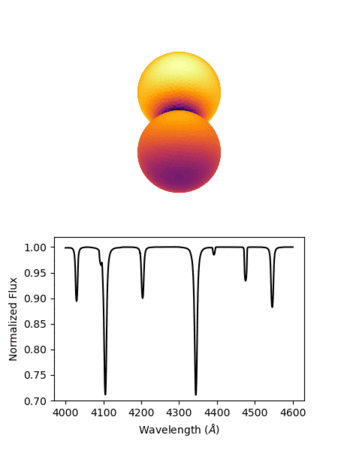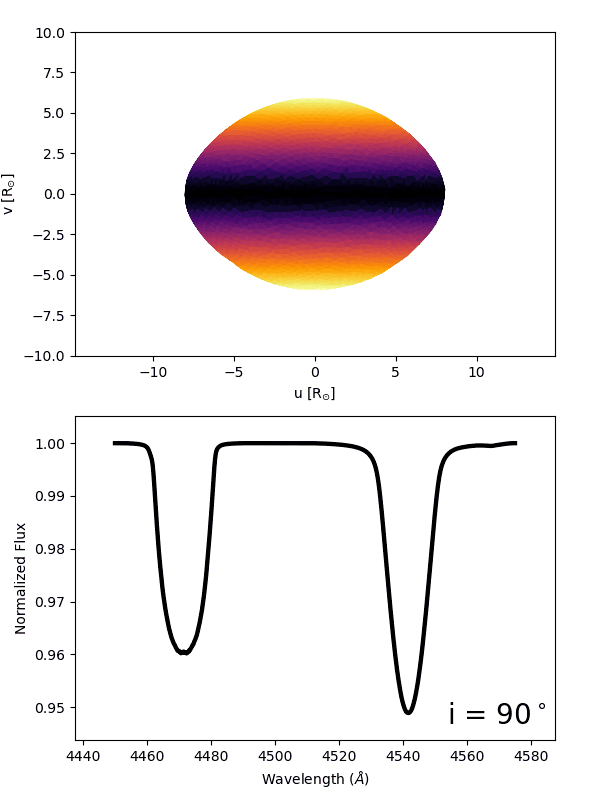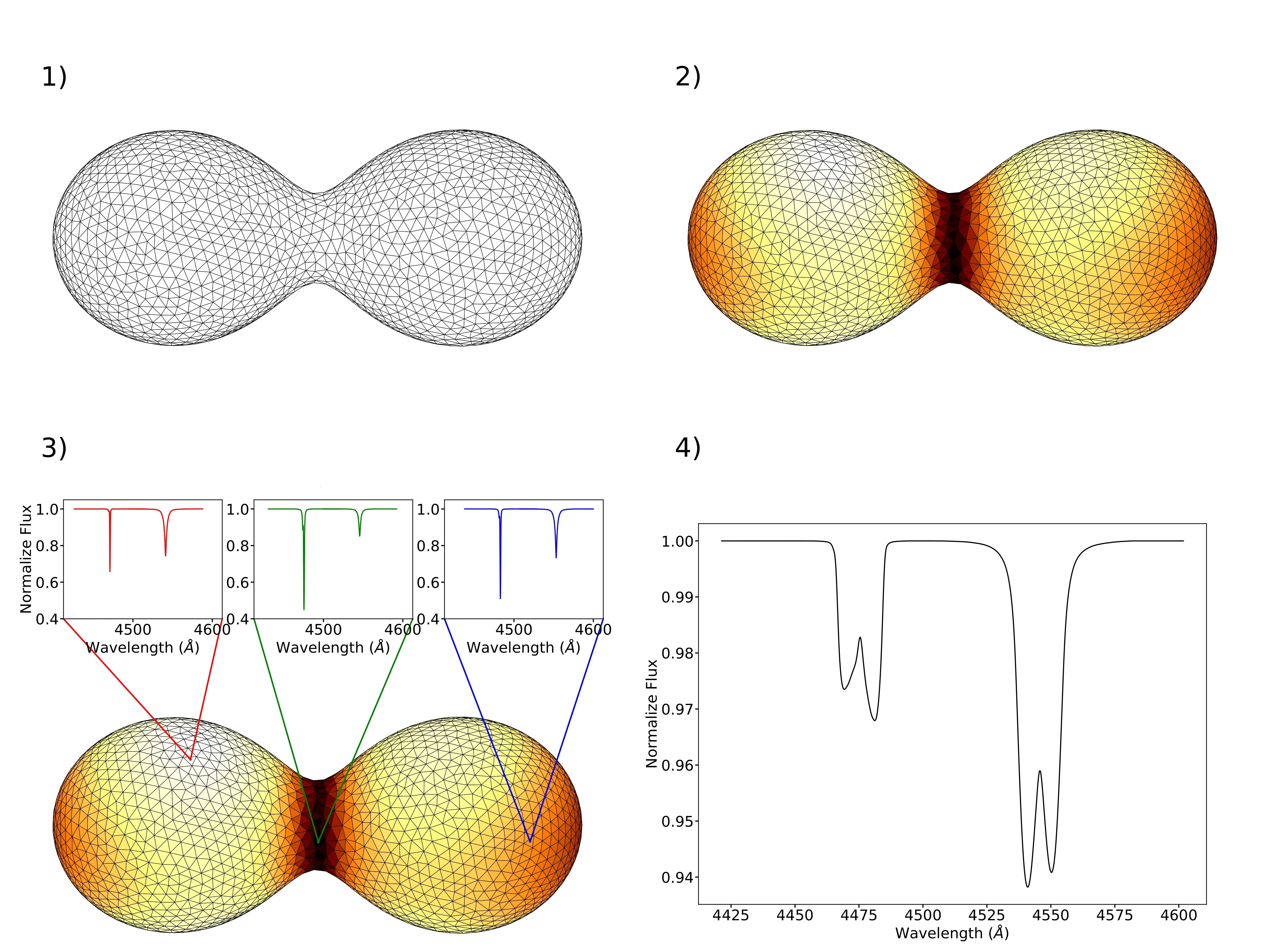Spectroscopic PAtch Model
for Massive Stars (SPAMMS)
Synthetic spectra processing with three-dimensional
stellar geometry and rotational surface physics

Massive stars are rarely perfect spheres. Their high rotation rates and close binary interactions can cause severe distortions from spherical symmetry, affecting their surface temperature, gravity, and ionization conditions. These asymmetries, in turn, reshape their emergent spectra in ways that are often oversimplified or neglected in traditional analyses.
To overcome these limitations, I focus my research on the development and application of SPAMMS (Spectroscopic PAtch Model for Massive Stars)—a robust 3D tool for synthetic spectral generation in non-spherical massive stars. SPAMMS merges the surface geometry modeling of PHOEBE II with the NLTE and LTE atmosphere codes capabilities (FASTWIND, TLUSTY and Kurucz) to build a spectral synthesis framework that accounts for each local patch's temperature, surface gravity, and projected velocity.
The SPAMMS process unfolds in four core steps:
The illustration above summarizes these steps: from the generation of the surface mesh (top left), to the temperature mapping (top right),
the assignment of individual line profiles (bottom left), and the final integrated spectrum (bottom right). This modeling is phase- and
inclination-dependent, enabling simulations of evolving spectra across an orbital cycle or varying viewing angles.

The animation on the left shows SPAMMS in action for the overcontact binary VFTS 352. The top panel displays the local
temperature distribution, while the bottom panel shows the evolving HeI and HeII lines across orbital phases. This system, with surface
temperature variations exceeding 10.000 K, cannot be accurately analyzed with spherical models. SPAMMS models both components and their
interaction self-consistently, including the contact bridge region that is usually neglected.
One of the core innovations of SPAMMS is its intrinsic modeling of rotational broadening, built directly into its
patch-based geometry. Unlike conventional techniques that apply a post-processing rotational convolution to 1D spectra, SPAMMS computes
the true line-of-sight velocity field across the stellar surface by assigning Doppler-shifted synthetic line profiles to each individual
mesh triangle. This allows the model to naturally reproduce asymmetric, inclination-dependent line shapes—without
relying on arbitrary projected velocity parameters.

The animation on the left demonstrates SPAMMS's ability to model a star rotating at 90% of its critical speed. The top panel reveals the latitudinal temperature gradient caused by gravity darkening—hotter poles and cooler equator—while the bottom panel shows how the spectral line profile evolves with inclination. When viewed pole-on, the hotter polar regions dominate the projected surface, enhancing HeII lines and weakening HeI due to increased ionization. This can lead to a systematic overestimation of temperature if not modeled in 3D. When viewed equator-on, the cooler, rapidly rotating equatorial zones contribute broader but shallower HeII lines.
SPAMMS is designed to model both isolated fast rotators and tidally distorted binaries across a wide range of stellar types, particularly OB stars.
By fully integrating local temperatures, ionization conditions, and Doppler shifts across a 3D stellar surface, SPAMMS accounts for both
line broadening and intensity variations—effects that are missed by traditional 1D models. Combined with
a growing library atmospeheres intensity grids (FASTWIND, TLUSTY, Kurucz) and phase-resolved modeling capabilities,
SPAMMS offers a powerful framework to revisit long-standing biases in stellar parameter estimation and move toward a truly three-dimensional
understanding of massive star spectra.




